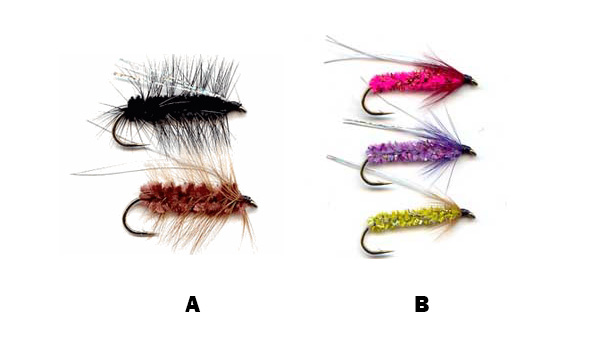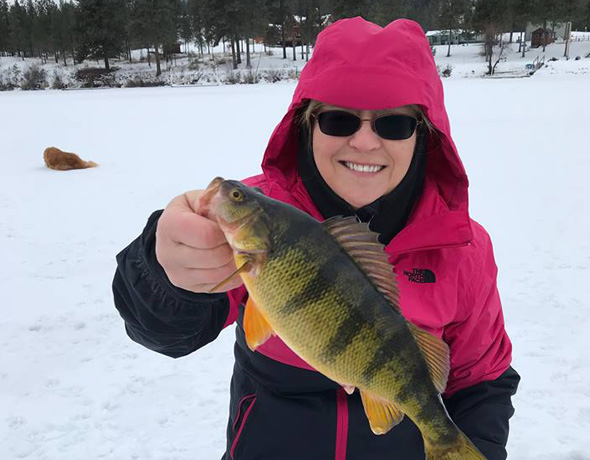Choosing Trolling Flies Troll Fly Fishing


A common question asked by fisherman is “What fly works in this lake?” When you are trying to choose trolling flies the question should be “What is the feed in this lake?” If you know what the fish are eating at the time you are fishing, you will have a very good idea of what type of trolling fly to offer fish.
There are two general categories of trolling flies. The first category contains fly patterns that mimic natural feed. Flies in this category may be Carey, nymph, wooly worm, leech, wooly bugger, muddler and terrestrial and crustacean patterns like shrimp, ant, and bee Carey. These patterns are usually in the natural colors of browns, olives, greens, and black.
The second category contains fly patterns that attract fish with the use of color, flashy materials like Krystal flash, flashabou, laser strands or beads. Flies in this category may be flies that mimic natural feed but come in the fluorescent colors of green, pink, orange, or bright colors of red and yellow. It also includesflies like Carey and wooly buggers with red tails and combinations of color on body, tail, wing, head or beard. Examples of these patterns are
kokanee flies, egg sucking leech, marabou muddlers and flies with bead heads. The bead heads used on trolling fly patterns are not weighted. They are for attracting purposes only.
Trolling flies come in several hook sizes. The most common size, for flies that mimic natural feed, is size #6 and can range in length from lx to 4x long depending on the pattern. Very few patterns use hooks smaller than size #6 because smaller flies are not as easily visible to the trout in the deep. We are finding that large attractor flies in size #4 and #2 do very well in the fall. Feed is scarcer in the fall and trout may be anticipating the winter by stocking up on as big a feed as they can get.
Thus, we have a large variety of flies that can be used for trolling, but we are back to that old question, “Which one do we use?” Here are some general recommendations based on what the fish may be feeding on at the time you are fishing:
Early spring: After the ice is off the lake, the natural hatches of damsel flies, dragon flies, caddis flies and may flies begin to appear. At this time you want to use fly patterns that mimic the natural feed such as the Carey and nymph in natural colors.
Mid to late spring: As the natural hatches begin to wind down, use flies with fluorescent color and include leech, wooly bugger, flasher and patterns with red tails.
Early summer: With the start of warmer weather the land insects and crustaceans begin to appear. Try shrimp, ant, wooly worm, and bee Carey at this time and continue to use the fluorescent colored flies and add red and yellow flies
Late summer: Water is warming up, fishing seems to be very slow, and trout harder to find. The problem now is finding the depth where the fish are comfortable rather than trying new fly patterns. This is a good time to add a spinner attachment between the fly and the leader. It causes more disturbance of the water because adding vibration helps trout seek out your lure.
Fall: This is the time for large colorful flashy flies with spinner attachments. Muddlers, large wooly buggers and #2 flies with laser flash work really well right up to the time the lake freezes over.
